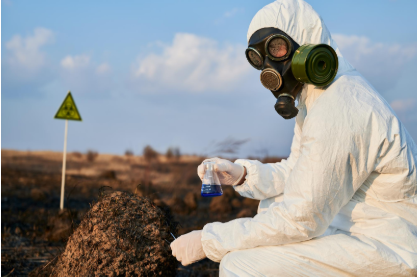Top 5 Benefits of Using a Certified Technician for Samsung Fridge Repair
On-site asbestos monitoring is crucial because exposure to asbestos-contaminated soil and air can cause several fatal health issues. The main purpose of on-site asbestos monitoring is to eliminate the risk of asbestos contamination among the workers and people exposed in the area. For both residential and commercial spaces, asbestos monitoring is essential to protect public health and reduce the chance of soil contamination.
Therefore, professional soil inspection companies need to use accurate and safe methods to examine soil and air quality to look for asbestos-containing materials. However, the chance for mistakes in this process cannot be ignored. Hence, we are looking into five commonly occurring mistakes which happen while inspecting asbestos contaminated soil and air.
Mistake 1 – Skipping Pre-Site Risk Assessments
Before choosing the site for construction or demolition, a thorough hazard identification is crucial before monitoring the asbestos level in the soil or air. Skipping pre-site risk assessment can lead to data gaps which can cause regulatory issues.
Why is a Thorough Pre-site Assessment Required?
Conducting a thorough risk evaluation is key to determining asbestos contamination. In older buildings, asbestos can be found in cement sheets, external cladding, and roof insulation. According to the Work Health and Safety Regulations of Australia, an Asbestos register needs to be used to record potential asbestos contamination during pre-site assessment. It is essential to protect workers and local habitats from potential contamination. For the latter, a thorough inspection of possible asbestos contaminated soil is essential.
Mistake 2 – Using Improper or Uncalibrated Monitoring Equipment
During asbestos air monitoring, it is important to collect the airborne asbestos through calibrated sampling pumps. The analysis of airborne asbestos is done through advanced Phase Contrast Microscopy (PCM). If the monitoring equipment is uncalibrated, it can show inaccurate readings.
Using improper tools can overlook many asbestos fibers. When it comes to professional inspection, tools like PCM and TEM (Transmission Electron Microscopy) are likely to provide more accurate results. However, not calibrating the tools cannot identify the right areas with asbestos contamination.
Mistake 3 – Poor Sampling Technique or Wrong Sampling Points
Poor sampling and selecting an inaccurate sampling point can reduce the accuracy of asbestos monitoring by underestimating or overestimating the quantity of asbestos present in the soil or air.
How Sampling Location and Method Affect Results
Different sampling locations and using different sampling techniques can also affect the outcome of the asbestos survey. For example, taking samples from such a place that is located in the proximity of an asbestos-containing source.
While conducting asbestos air monitoring, samples are collected from air currents. Sampling in an area where there is a stronger airflow can show fluctuations compared to stagnant places. Thus, choosing the right sampling location will reduce the chance of false-negative readings.
Since asbestos particles tend to spread quickly, it is also essential to use the right containment setup. Safe handling practices should include specific barriers and air filters to restrict asbestos dust from getting exposed to human skin.
Mistake 4 – Inadequate Personal Protective Equipment (PPE)
Inadequate use of Personal Protective Equipment (PPE) can lead to asbestos contamination for the workers working on the construction project. Neglecting to use PPE kits can allow harmful asbestos fibers to affect the well-being of the workers.
Complete PPE gear is the last level of protection from the hazardous asbestos particles. These kits would include special mask respirators, disposable suits, gloves, and boots. These kits entirely block any microscopic bits of asbestos from getting into the lungs or exposed skin.
Mistake 5 – Poor Documentation and Record-Keeping
It is also necessary to record the reading, sample location, and safety measures taken to assess the importance of asbestos monitoring. Poor documentation can lead to a misunderstanding in tracking asbestos-containing materials. Additionally, insufficient documentation can also lead to non-compliance with the legal requirements.
Failing to keep the asbestos assessment documentation prepared can result in potential violations of the safety regulations. This can result in monetary fines and legal actions.
To Summarise
On-site asbestos monitoring can be considered fruitful only if the process is precise and follows the regulatory requirements. These five mistakes are generally common when it comes to site assessments for asbestos and airborne asbestos. From poor sampling to the neglected usage of protective equipment, ignoring these can lead to workplace hazards and impose health and regulatory complications. Getting the soil and air of the project site inspected for potential asbestos contamination is only recommended to be done by expert site assessment companies.
Consult a Certified Site Assessment Company for Professional level Inspection!
Want to get your project site assessed before your construction project starts? Refer to a certified site assessment company for effective site inspection to prevent asbestos exposure and ensure worker safety.





